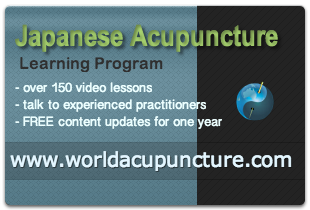At the Sports Medicine Centre Christmas party last Saturday afternoon I met Matt, a sports psychologist who was surprisingly adept and comfortable with the concept of bio energetics.
I could see by his reactions that Matt was cognitive about the concept of treating the human organism as an extremely subtle bio-energetic entity.
Chronic fatigue, glandular fever, poor sleep, excessive dreams, depression are some of maladies that can silently consume aspiring athletes and bring a sudden or not so sudden end to an elite athletes career.
I related to him the successful clinical outcomes of two past patients, each stars of their own fields, Daniel in world swimming and Alastair in the Australian Rules Football.
 Daniel regularly fell ill towards the latter part of swimming meets and Alistair suffered from fully blown Chronic Fatigue Syndrome and as consequence struggled to train or play more than a handful of minutes each game.
Daniel regularly fell ill towards the latter part of swimming meets and Alistair suffered from fully blown Chronic Fatigue Syndrome and as consequence struggled to train or play more than a handful of minutes each game.
With regular treatment the health of both athlete’s health improved markedly.
Both went on to add to their booty, Daniel won a relay gold medal at the 2000 Olympics to go with the bronze and silver medals that he won at Atlanta in ’96 and Alastair added 3 Premierships/National Championships to his CV before retiring.

So it was that insomnia, insidious energetic disorders including depression and their effect on performance both intellectual and athletic, consumed a majority of our conversation.
Matt acknowledged that orthodox medication usually prescribed for these conditions can be effective but often detrimentally affected the athlete’s performance in one way, shape or form.
Matt related extremely well to the analogy that I used to explain the yin/yang symbol.
He instantly recognized the relativity when I explained how the yang energy travels inward at night on a mission to nourish the yin energy and yin by virtue of its nutritive and contractive qualities attracts and plays host to the more dynamic yang energy.
It is it during sleep that this deeper level of nourishment and regeneration takes place.
In the morning as the liver purges stored blood upon activity the yang energy once again moves out, combining with the life giving Qi contained in each breath we take to circulate to the extremities and brain providing the energy for activity.
Insomnia is commonly caused by the body’s inability to host the more dynamic yang energy at the deeper yin levels resulting in an inappropriate amount of yang energy remaining in circulation thus stimulating excessive brain activity, dream disturbed, restless and non regenerative sleep.
I explained that this theory had been in existence for 1,000’s of centuries.
We discovered that both of us were aware of the vital role breathing has in maintaining the balance and harmony required for superior performance in any field.
This mutual awareness provided a golden opportunity to explain the principal of breathing into the ‘Dan Tien‘.
The lower abdomen according to Oriental medicine is the center of our being.
By focusing on taking our breath to this level it is possible to recharge one’s batteries to an astonishing degree.
I pointed out how in between rounds the seconds (assistants) in a boxers corner pull the elastic waistband of their fighters shorts away from the lower abdomen to allow the fighter to take deeper, lower abdominal breaths in between rounds.
The great Muhammad Ali’s trainer, Angelo Dundee always assisted his fighter in this way.

Both Ali and
Fortunately most of us don’t have to fight for survival as Ali did V Foreman and Frazier but we can certainly enhance our physical and mental performance PLUS increase our ability to relax using this breathing technique.
As practitioners of Traditional Acupuncture it is imperative that we use the art of ‘Dan Tien’ breathing to generate and stabilize our Qi.
By using such practices we can increase the efficacy of our treatments, our longevity as practitioners plus take our practice of Traditional Acupuncture to another level.
Matt was open and flexible enough of mind to be deeply impressed by the tenure, flexibility, subtlety and power of the amazing healing art/science of traditional acupuncture.
I am grateful to have had this conversation just prior to my departure from the party and happy to be present when my physio colleague Chris won the prestigious ‘gnome’ for sartorial elegance, a stunning clinical outfit that included gleaming white leather shoes.
On all previous occaisions the ‘gnome’ had been awarded to the winner of ten pin bowling, lawn bowls, indoor bowls and croquet, (I was in the grand final for that one, taken out by a pilates practicing, female physio, talk about guile, took me weeks to recover!)
It can be a real challenge working in a conservative medical environment dominated by a dozen or so physio-therapists (physical therapists) most of whom practice ‘dry needling’ with giant needles and believe energy is something derived by consuming brightly colored sport’s drinks?
As always the only way to truly represent the dynamics of traditional acupuncture is via treatment.
I invited Matt to test drive Traditional Acupuncture, because in my book, one treatment can be worth a thousand words.
It is one thing to talk the talk, entirely another to walk the talk.
Chinetskyu Moxibustion for Olympian Shoulders
As interest in acupuncture mounts, it our responsibility as professionals to develop our individual abilities to communicate effectively about the unique qualities and clinical efficacy of Traditional Acupuncture to those who want to know.
Hope you hav a gud 1,
Alan


Speak Your Mind